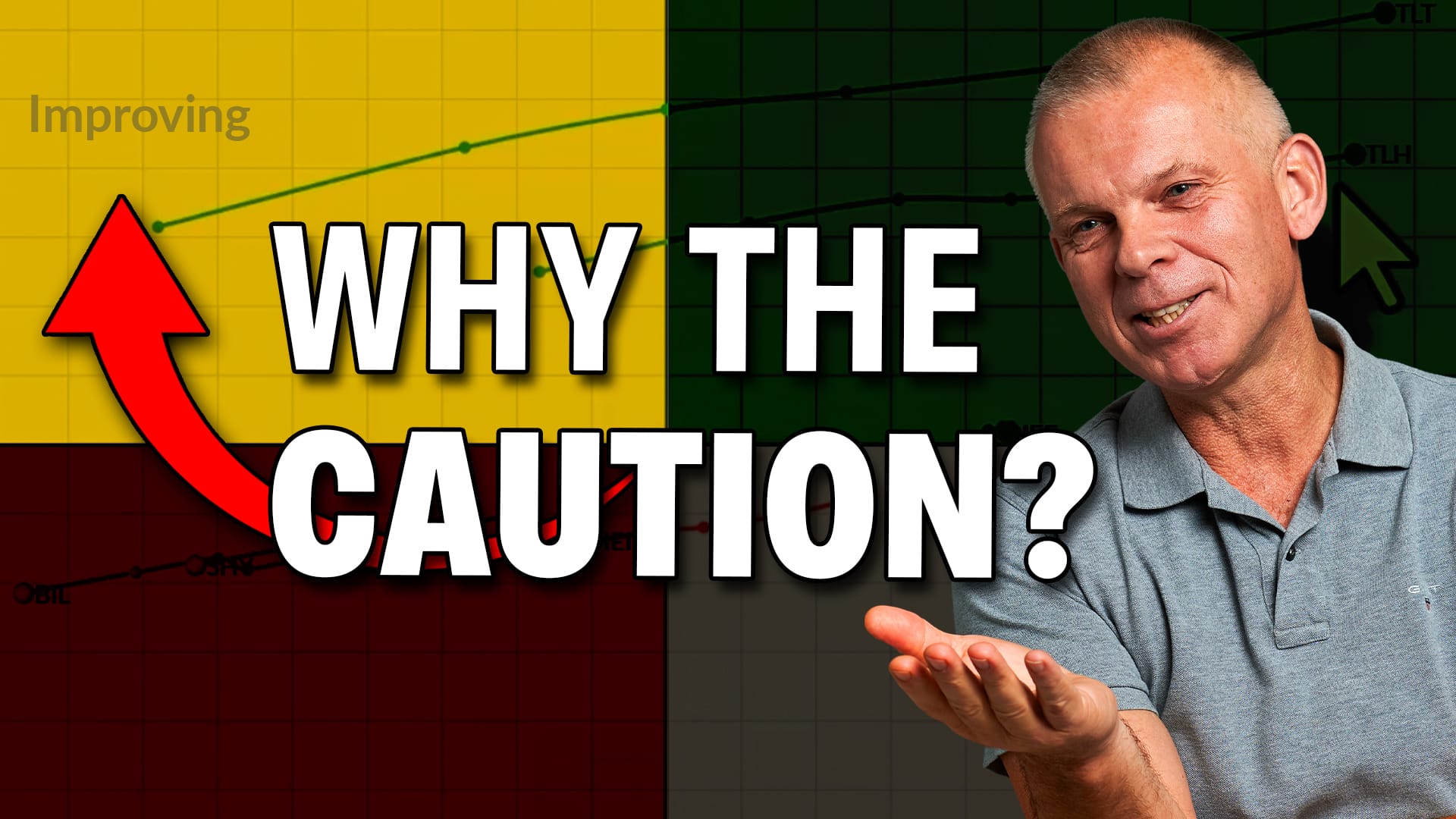KEEP EYE ON BIG PICTURE -- MONTHLY CHARTS SUGGEST MAJOR BULLISH TIDE IS RUNNING OUT -- WEEKLY CHARTS SUGGEST INTERMEDIATE-TERM "WAVES" ARE STARTING TO RECEDE AS WELL
MONTHLY INDICATORS WEAKEN ... It's very easy to get caught up in daily (and even weekly) market swings. That's especially true for those of us who follow the markets on a daily basis. There's an awful lot of confusion about the state of the stock market and the economy. The media doesn't help much by bringing on guest after guest who give differing opinions. What to do? I'd suggest keeping an eye on long-term charts. Although they don't give many signals, the ones they do give are very important. Monthly charts are also the most important in determining the major market trend. A century ago, a market writer compared the stock market to the ocean. He referred to short-term trends (on daily charts) as ripples, intermediate-term trends (on weekly charts) as waves, and major trends (on monthly charts) as the tide. It's the direction of the tide that we're concerned about here. Because it ultimately determines the direction of the ripples and waves. Monthly charts suggest that the tide is moving out for the first time time in five years. Chart 1 overlays the 14-month RSI (blue line) over "monthly" bars of the S&P 500 for the last ten years. Readings below 30 are oversold. The last time that happened was at the 2002 bottom. Readings over 70 are overbought. The S&P reached that level two years ago. What's more important, however, is the direction of the RSI line. It has now fallen to the lowest level in three years. It has also broken the up trendline drawn under five-year lows. That suggests the major trend momentum is now falling for the first time since the bull market started in 2003. And don't overlook the possibility of a major "double top" forming in the S&P around its 2000 peak (see circles).

Chart 1
RATE OF CHANGE IS ALSO FALLING... Another measure of long-term market momentum is the 13-month Rate of Change indicator. I've overlaid it on the monthly S&P bars in Chart 2. Major signals are given when the black line crosses above or below the zero line. The last major sell signal was given in late 2000, and the last major buy in mid-2003. Right now, the ROC has fallen to the lowest level in three years and is drawing dangerously close to its zero line. But there's more. The direction of the ROC line is also important. The line formed a "lower peak" in 1999 (first arrow), which gave an early warning of a market top. It formed a second "lower peak" during 2007 (second arrow). Another indication that the long-term uptrend is weakening. [Keep in mind that momentum indicators like these usually turn before the market does].

Chart 2
MONTHLY MACD LINES TURN DOWN ... In mid-December, I warned that monthly MACD lines were in danger of turning down. Unfortunately, that's exactly what they did courtesy of a failed yearend rally attempt. The MACD histogram bars in Chart 3 show the downside crossing more clearly (red circle). The December violation of the zero line was the first monthly sell signal in the NYSE Composite Index since 1999, and the first major downturn since the last bull market started. January got off to a bad start yesterday. Although it's much too early in the month to draw any conclusions, keep in mind that the direction of the market during January usually determines its direction for the year. That puts the onus on the bulls to deliver a strong January.

Chart 3
% NYSE STOCKS OVER 200-DAY AVG STILL FALLING... Here's another long-term chart that suggests that the bull market is in trouble. The red line measures the % of NYSE stocks that are trading over their 200-day moving averages. That chart suggests that bull market corrections often end near the 40% level. Readings over 60% are needed to support a rising trend. The current reading of 32% is well below both levels. In past bear markets (like 2002) that number has fallen as low as 10%. The direction of the red line is also important. It has to start rising to signal a higher market. Chart 5 (plotted through Wednesday) shows it still falling. In my view, the % number would have to exceed 60% (the October peak) to reverse its current downtrend. The fact that it has fallen to a five-year low isn't encouraging. How can a bull market exist when nearly 70% of its stocks are in downtrends?

Chart 4

Chart 5
GOLD'S TIME TO SHINE ... While the stock market has gotten off to a rocky 2008 start, gold has soared to a new record high. On Wednesday, the price of bullion exceeded its 1980 high at $850 (and rose again today). The 1980 gold peak signaled the end of the inflationary commodity boom of the 1970s, and paved the way for a twenty-year bull market in stocks that ended in 2000. The 2000 peak in stocks (and a weaker dollar) helped turned the major tide back in favor of bullion. The gold/S&P 500 ratio in Chart 6 turned up in late 2000 and has been in an uptrend ever since. This week's rally in gold (and selloff in stocks) pushed the ratio to a new five-year high. While part of gold's rally is tied to a weaker dollar, gold also does well when stocks don't. The last time we saw that happen was in the 1970s. Interestingly, that was also the decade where we last heard talk about "stagflation" (higher inflation and weak economic growth). Chart 7 plots the gold/S&P 500 ratio since 1980 (using a log scale). From 1980 to 2000, gold was the weaker performer by far as investors preferred paper over hard assets. After bottoming in 2000, the ratio broke its 20-year down trendline in 2002 and signaled a new preference for hard assets. If the stock market is peaking (and the dollar stays weak), gold should continue to benefit from both trends.

Chart 6

Chart 7
WEEKLY MOVING AVERAGES AT CRITICAL POINT... While monthly indicators suggest that the market's "tide" is ebbing, weekly charts suggests the "waves" are beginning to recede as well. Chart 8 compares the 13- and 34-week exponential moving averages to the S&P 500. They're dangerously close to turning negative. The black line below Chart 8 plots the difference between the two EMAs. That line is testing its 2006 low and, more importantly, the zero line. It hasn't been below that support line since the spring of 2003. That's a very important test. It's pretty difficult for the short-term "ripples" in the market to make much headway, when the market's "waves" and "tide" are receding.

Chart 8











